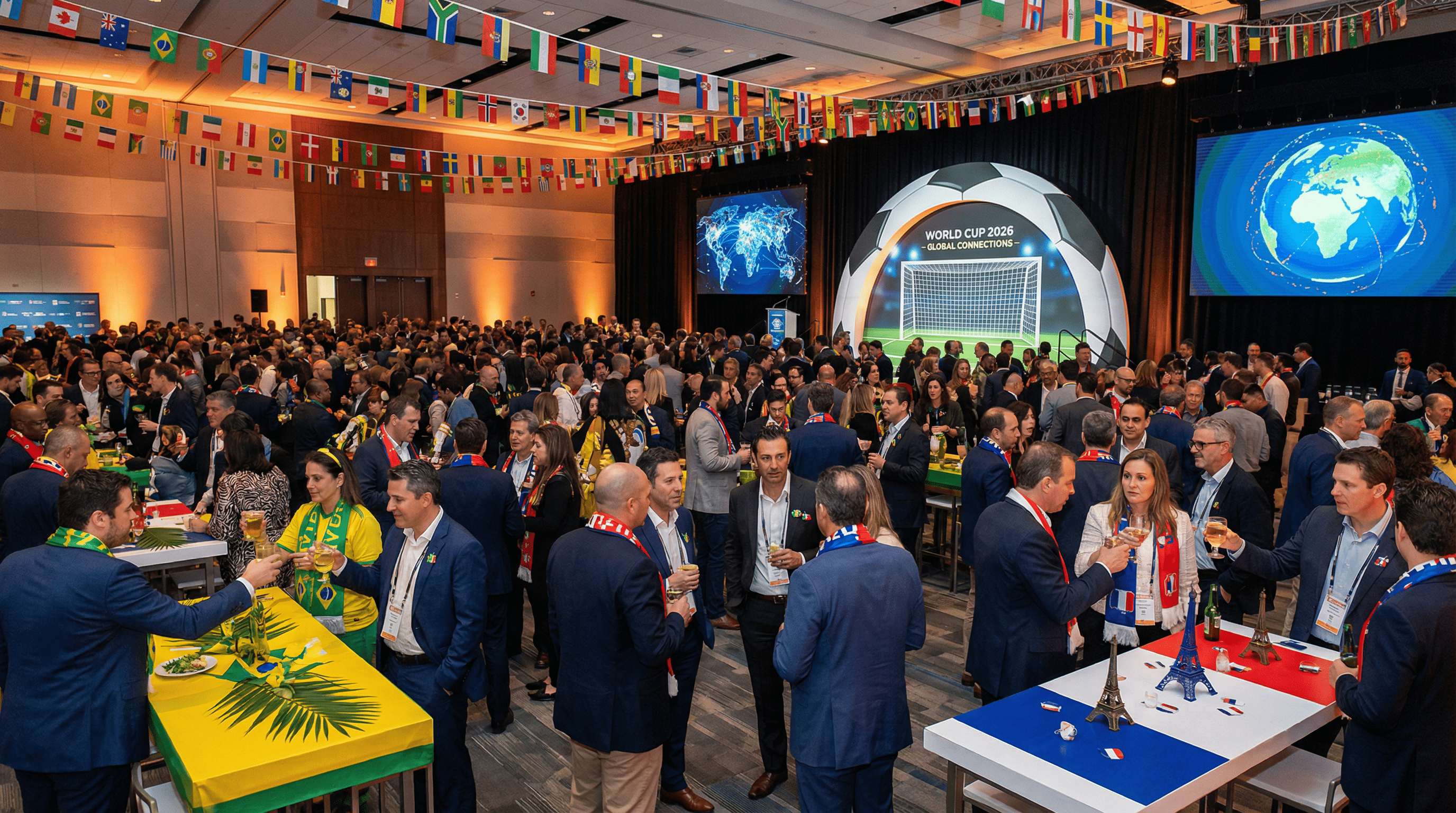.png)
In the hearts of millions of Latin Americans, the three El Chavo del 8 episodes in Acapulco remain a symbol of humor, tenderness, and camaraderie. However, beyond entertainment, these episodes reflect a strategy now recognized as one of the most effective in the corporate world: incentive travel.
What seemed like a fun getaway for the cast was, in fact, a multi-purpose initiative: recognizing the team's efforts, strengthening bonds, breaking the routine, and promoting the destination. In real life, this trip also marked the beginning of internal tensions that eventually fractured key relationships within the group.
This paradox reveals a key insight: an incentive trip can be powerful, but its success depends not only on the destination or logistics, but also on how the team's emotional climate is managed before, during, and after the experience. This is where strategic planning and professional support—like that provided by Ozum—become essential. A poorly managed experience can deepen cracks, while a well-designed one can transform cultures and relationships.

Chespirito and Acapulco: Three Episodes, One Impactful Strategy
In the 1970s, the production team of Chespirito filmed three special episodes in Acapulco. More than just a narrative device, it was a multi-purpose action: to thank the team, foster a sense of unity, and at the same time, promote Hotel Emporio and position Acapulco as an attractive destination for domestic tourism.
These episodes not only showed the cast in a relaxed and natural environment but also deepened their bond with the audience. The result was clear: authentic scenes, emotional connection with viewers, and an unforgettable memory for generations.
Still, this moment also marked a turning point. Behind the scenes, conflicts, egos, and differences emerged—tensions that had long been brewing. The trip wasn't the origin of the conflict but rather the setting where underlying dynamics surfaced. Today, it reminds us that any corporate experience must be based not only on a great location but on clear intentions, open communication, and aligned expectations.
What You Don’t See: Planning and Purpose Behind Chespirito’s Trip
Beyond what appeared on camera, organizing the trip to Acapulco required extensive planning: selecting a destination suitable for both filming and relaxing, coordinating transportation, production, and accommodations, and ensuring an environment that fostered both creativity and bonding.
Acapulco was chosen for key reasons: good connectivity, solid hotel offerings, favorable weather, and strong emotional symbolism for Mexican audiences. These elements remain relevant today when planning a successful incentive trip.
At Ozum, we know incentive travel isn’t improvised. We design holistic experiences that combine corporate goals with human well-being. Because a trip isn’t just about where you go—it’s about why you go, who you go with, and how that experience transforms your team.
Incentive Travel Today: What It Is and Why It Works
Incentive travel is a business strategy designed to reward and motivate employees or teams through memorable travel experiences. They’re not vacations—they are tools for emotional and motivational management.
Recent studies show companies that implement incentive travel can boost productivity by up to 22%, reduce employee turnover, and strengthen company culture. In a post-pandemic world, these experiences are more valuable than ever.
Beyond the destination, the key is strategic design: aligning with business goals, focusing on people, and executing with excellence.
The Hotel’s Role: A Key Partner in the Experience
A critical—yet often underestimated—element in any incentive trip is the hotel. It’s not just about accommodation; it’s a space that must meet the logistical, technical, and emotional needs of the group.
Hotel Emporio Acapulco is a historical example: it offered the right infrastructure for both production and relaxation and became an essential part of the narrative. Today, many beachfront hotels have evolved to fulfill the same role, training their staff and creating specific solutions for the MICE segment (Meetings, Incentives, Conferences, and Exhibitions).
The key is to work with hotels that go beyond being vendors and become strategic allies.
Mexico’s Beaches as Strategic Corporate Destinations
Mexico offers an unparalleled variety of beach destinations ideal for incentive travel. From Cancun and Riviera Maya to Los Cabos, Huatulco, and Riviera Nayarit, each destination offers unique advantages: excellent connectivity, outstanding weather, diverse hotel options, and specialized services.
Acapulco, which made history with Chespirito, remains a relevant option—especially for domestic markets. Other beach destinations also offer luxury experiences, fine dining, sustainable tourism, and unforgettable settings that elevate any corporate event.
For companies looking to turn routine into meaningful experiences, the Mexican coastline continues to be one of the most powerful answers.
What Ozum Does: Strategic Design of Corporate Experiences
At Ozum, we don’t sell trips—we design experiences. We understand that every team is different, which is why our proposals adapt to each client’s culture, objectives, and challenges.
Through a proprietary methodology, we combine logistics, creativity, and strategic analysis to create moments that mark a before and after. From destination selection to itinerary details, we manage every aspect to ensure a positive, lasting impact.
We’ve worked with teams of all sizes and industries, and the result is always the same: transformation through experience.
Why Incentive Travel Still Matters Today
In a world where talent seeks more than a paycheck, emotional recognition and meaningful experiences have become competitive advantages. Incentive travel offers rewards without money, connection without speeches, and relationship-building without forced dynamics.
Leaving the everyday environment reactivates creativity, breaks hierarchical barriers, and creates a shared sense of purpose. Testimonials from companies that have traveled with Ozum confirm it: a team that travels and transforms returns more aligned, motivated, and committed.
Lessons from Chespirito for the Business World
Chespirito didn’t just create laughter—he built a work culture where recognition was key. Although the Acapulco trip had both highs and lows, it leaves a clear lesson: when you invest in real, shared experiences, you can transform a team’s energy.
Recognition, human connection, emotion. Three ingredients that remain relevant in any purpose-driven business strategy.
The Power of Memory: When a Trip Becomes Culture
Years later, millions still remember those Chavo del 8 episodes in Acapulco. That’s the difference between just another trip and an impactful experience: it becomes part of memory and identity.
The same is true in business. When a team shares something extraordinary outside of work, they return with newfound motivation, loyalty, and cohesion. That’s how culture is built—beyond KPIs.
From Television to Business: Inspiration Beyond Contexts
Entertainment shows us that emotional connection with an audience creates lasting value. Brands can learn from this to design experiences that not only communicate but transform.
A well-designed corporate trip is also storytelling. It’s brand identity. It’s internal and external positioning. And above all, it’s a tool for building genuine relationships with the people who make business possible.
Key Tips for Organizing an Effective Incentive Trip
• Define clear objectives from the start.
• Choose a destination aligned with your company culture.
• Ensure you have strategic partners (hotel, agency, suppliers).
• Pay attention to every detail: from logistics to group dynamics.
• Evaluate post-trip results to measure real impact.
Avoid improvisation. A poorly planned trip not only wastes budget—it can hurt team morale.
Conclusion: When Experience Goes Beyond Work
Chespirito’s story reminds us that teamwork, emotional recognition, and shared experiences are timeless ingredients. A well-planned trip can motivate, transform, and leave a lasting mark.
Now more than ever, companies must focus on the human element. And strategically designed incentive trips are one of the most effective ways to do it.
FAQs
What is an incentive trip and what is its goal?
It’s a planned experience designed to motivate, recognize, and strengthen a company’s team, aligned with strategic objectives.
Why are Mexico’s beaches a good destination for corporate events?
Because of their connectivity, hotel offerings, natural beauty, and specialized services for the MICE segment.
What role do hotels play in incentive trips?
They are strategic partners. They provide more than lodging: infrastructure, logistics, and trained staff for corporate events.
How does Ozum ensure the success of these trips?
With a personalized approach, strategic planning, and a network of expert partners to guarantee memorable and effective experiences.
Is this strategy effective for small companies?
Yes. Experiences are tailored to each company’s size, culture, and goals. It’s not about budget—it’s about purpose.






